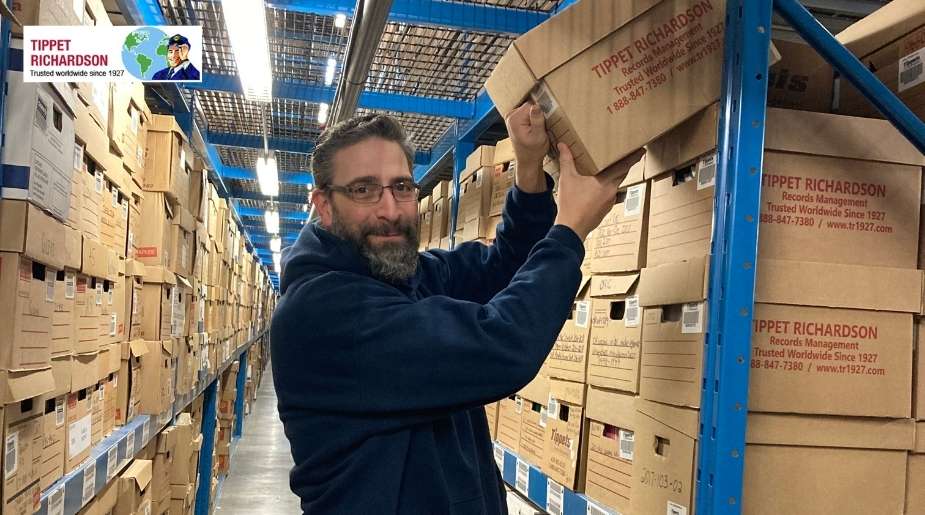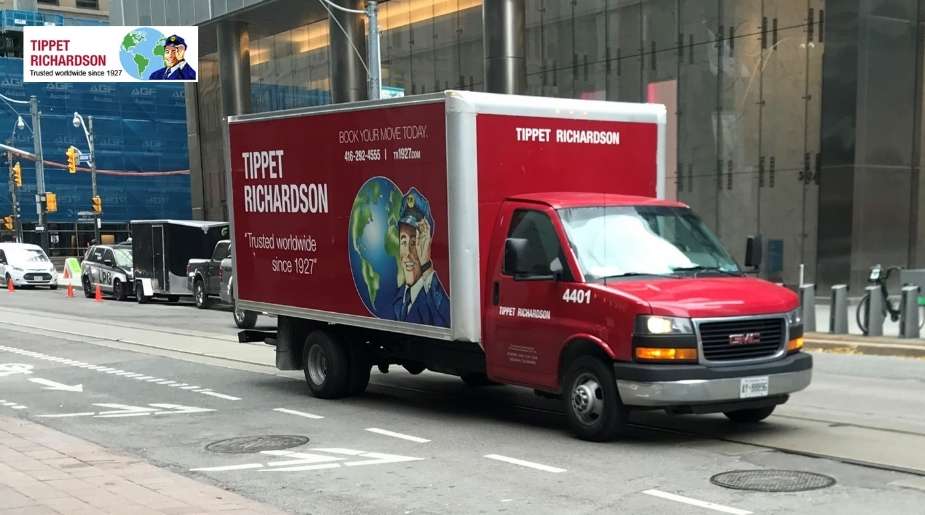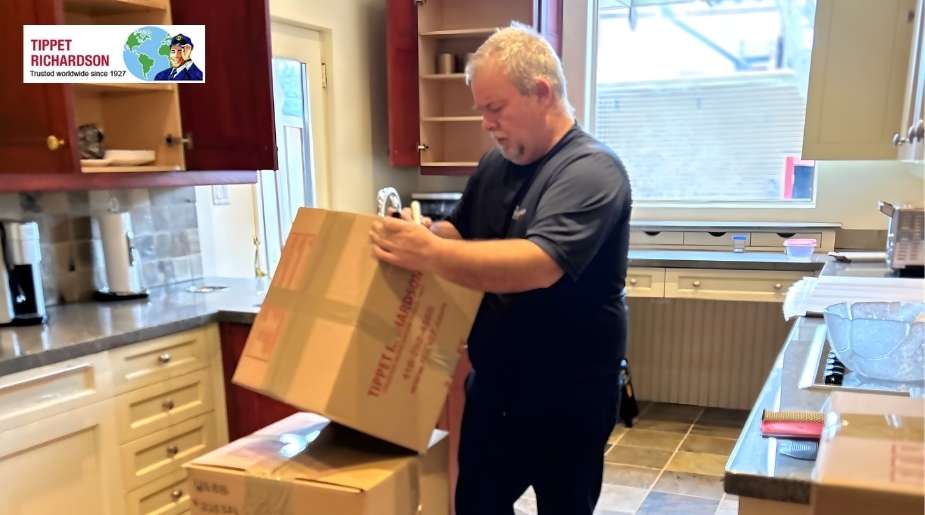When embarking on an international move, understanding transit times international moving is one of the most crucial steps to ensure a smooth relocation journey. Transit times essentially refer to the total duration it takes your belongings to travel from your current residence to your new home overseas. This timeframe can vary significantly depending on factors like the countries involved, the chosen mode of transport, and customs procedures encountered along the way. For many Toronto residents, the uncertainty surrounding these timelines can cause undue stress and complicate moving plans.
Tippet Richardson, a seasoned international mover serving Toronto since 1927, recognises how vital it is for clients to have clear insights into their global timeline. Few things impact the success of an international move as much as well-managed expectations around transit duration. Clients who understand the approximate shipping ETA estimates can better coordinate other essentials such as housing arrangements, school enrolment, and workplace transitions.
Moreover, transit times international moving affect the practical aspects of your relocation. For instance, longer shipping durations may require arranging temporary accommodation or storage solutions. Unexpected delays can disrupt scheduled activities, leading to increased costs and frustration. That’s why experienced movers like Tippet Richardson provide transparency by offering realistic, data-driven shipping ETA estimates grounded in deep knowledge of global timelines.
By clarifying these timelines upfront, Tippet Richardson helps Toronto families and individuals reduce uncertainty. This allows for more efficient planning, from preparing documentation to scheduling packing and final move dates with confidence. Ultimately, gaining a comprehensive understanding of transit times international moving lays a solid foundation for a stress-free international relocation. With the right mover by your side, you can navigate this complex process with greater peace of mind and control.
What Are Transit Times for International Moving and Why Do They Matter?
Defining Transit Times International Moving
Transit times international moving describes the entire stretch from when your belongings are collected at your current location to when they arrive safely at your new home overseas. This includes the packing day, departure from the origin port or airport, the journey itself via shipping, air freight, or land transport, customs clearance abroad, and final delivery to your destination. Essentially, it’s the total time your possessions spend in transit and processing. Understanding this window is vital because it shapes the timeline for every other part of your international move, from scheduling to settling in.
Importance of Accurate Shipping ETA Estimates
Accurate shipping ETA estimates are more than just date predictions—they are fundamental tools that help you plan your relocation efficiently and with confidence. These estimates factor in schedules of vessels or flights, transfer times between modes of transport, and anticipated customs processing durations. Reliable ETAs enable you to coordinate essential tasks such as booking temporary accommodation, arranging utility transfers, and scheduling your arrival in your new country. When your mover provides transparent and realistic shipping ETA estimates, you reduce uncertainty, avoid costly rescheduling, and experience less stress throughout the moving process.
How Transit Times Affect Your Overall Move Experience
Transit times play a crucial role in how smoothly your international move unfolds. Longer transit durations may require you to consider short-term housing or storage solutions until your belongings arrive. Delays can disrupt pre-planned timelines for starting work or enrolling children in schools abroad. They can also increase costs—extended storage fees, additional travel expenses, or last-minute accommodation bookings add up quickly.
On the flip side, overly optimistic transit time expectations that aren’t met can lead to disappointment and headaches. That’s why working with an experienced international moving company like Tippet Richardson, with nearly a century of expertise serving Toronto’s global movers, makes all the difference. They provide realistic timetables aligned with the complex global timeline, ensuring your transition is as seamless and predictable as possible.
Key Factors Influencing Transit Times International Moving
Mode of Transport: Ocean Freight vs. Air Freight vs. Land
The mode of transport you choose has a significant effect on transit times international moving and the overall reliability of your shipment. Ocean freight is the most common method for international moves involving large shipment volumes. While it is cost-effective, ocean shipping usually has longer transit times, often spanning several weeks depending on the shipping routes. Delays can occur due to port congestion or weather conditions affecting sea travel. Air freight provides a much faster alternative, typically reducing transit time to days rather than weeks, but it comes at a premium price and has more restrictive cargo limits.
For moves within connected continents or less distant countries, land transport, including trucks or trains, may be involved either as a standalone solution or as part of multimodal shipping. Land transport generally offers more punctual and flexible scheduling but can be slower or subject to road or border crossing delays. Understanding how each transportation mode influences transit times international moving helps you choose the right balance between speed, cost, and shipment size.
Departure and Destination Locations
Geographic factors deeply influence transit times international moving. The distance between your origin and destination obviously affects shipping duration, but accessibility plays a crucial role too. Moving from or to major international hubs with well-equipped ports and airports tends to reduce delays and facilitate faster customs clearance. Conversely, remote locations, rural areas, or countries with less developed infrastructure may extend transit times due to limited transport options or inefficient local handling facilities. For example, moving internationally from Toronto, a major Canadian centre, generally allows smoother connections and shorter holding times compared to moving between less connected cities. Evaluating how departure and destination locations affect the global timeline enables you to plan more realistic transit expectations.
Customs Clearance and Documentation Processes
Clearance by customs authorities is a critical component that can unexpectedly lengthen transit times international moving. Customs regulations vary by country and often require thorough inspections, verifications, and proper documentation to approve incoming shipments. Incomplete or incorrect paperwork—such as missing inventory lists, inaccurate valuation, or inadequate permits—can cause delays or even temporary confiscation of goods. Some countries impose additional inspections or quarantine procedures for certain items. Preparing all customs documentation accurately and consulting experienced international movers like Tippet Richardson ensures smoother processing. Their expertise helps anticipate typical customs hurdles, minimize hold-ups, and incorporate expected clearance times into your shipping ETA estimates.
Being mindful of your move’s timing in relation to these factors allows better anticipation of potential slowdowns. With a mover based in Toronto like Tippet Richardson, you gain the advantage of local insight combined with global reach, helping you navigate these variable conditions for more accurate transit time international moving projections.
Understanding Shipping ETA Estimates: What to Expect and How to Prepare
How Movers Calculate ETA for International Shipments
When determining shipping ETA estimates, experienced movers like Tippet Richardson rely on a combination of data points and sophisticated algorithms to forecast delivery dates accurately. They start by analysing the mode of transport—whether ocean freight, air freight, or land—and the typical transit durations these entail for the specific route between Toronto and your destination.
Departure schedules, vessel or flight frequency, and historical transit times feature prominently in the calculation. Movers also factor in anticipated customs clearance timelines based on destination country regulations and past experience with similar shipments. Real-time information such as weather forecasts, port congestion reports, and global timeline fluctuations further refine the estimated times. By blending this wealth of data, Tippet Richardson can provide clients with shipping ETA estimates that help set realistic expectations and optimise the overall move schedule.
Common Causes of ETA Changes and Delays
Despite meticulous planning, several common factors can alter shipping ETA estimates once your belongings are in transit. Unpredictable weather events, such as storms or heavy fog, can delay ship or flight departures and arrivals, impacting transit times international moving. Port congestion is another frequent issue—busy hubs can experience backlogs, especially during peak seasons, prolonging waiting periods for unloading and customs processing. Paperwork inaccuracies or missing documentation may trigger customs holds, resulting in significant delays. Additionally, geopolitical disruptions, labour strikes, or public holidays within the transit corridor or destination country can unexpectedly slow movement. Being aware of these potential causes allows you to understand why ETAs might shift and why flexible planning is essential.
Communicating with Your International Mover in Toronto
Clear, consistent communication with your international mover is critical for managing your move’s timeline effectively. Tippet Richardson prioritises transparent updates, keeping clients informed about any changes in shipping ETA estimates or global timeline developments. Regular check-ins via phone, email, or client portals enable you to track progress and ask questions promptly. Providing your mover with accurate inventory details and ensuring all documentation is complete helps avoid unnecessary delays. Proactively discussing timelines and contingency plans prepares you to respond swiftly if disruptions arise. Maintaining an open channel with Tippet Richardson’s Toronto-based team empowers you to stay ahead of challenges and navigate your international move smoothly.
Practical Tips to Minimize Transit Times for International Moving
Choosing the Right Service for Your Timeframe and Budget
Selecting the appropriate service option is a pivotal step in managing transit times international moving. Movers typically offer a range from standard to express services, each balancing speed with cost. Standard international shipping services usually provide economical rates but often require longer transit times—sometimes several weeks—due to slower ocean freight and less frequent departures. Express services, often relying on air freight, dramatically reduce transit durations to just days but come with higher fees and size limitations. For moves originating from Toronto, partnering with a mover like Tippet Richardson allows you to evaluate these options carefully. Their expertise helps match your budget and timeframe requirements with the best available service, ensuring your relocation proceeds efficiently without surprises.
Preparing Documentation and Customs Paperwork Efficiently
One of the most effective ways to minimize transit times international moving is by managing all documentation and customs paperwork with precision and foresight. Accurate, complete forms submitted well before your shipment’s departure markedly reduce the risk of customs delays. Essential documents typically include detailed inventories, valuation statements, visas or permits, and certificates for special items like antiques or electronics. Working with an experienced mover familiar with Toronto’s international shipping regulations, such as Tippet Richardson, means having professional support to prepare, review, and submit your paperwork correctly the first time. Early preparation also allows time to address any missing elements or follow up on approvals ahead of shipping, smoothing the customs clearance process and speeding up delivery.
Packing and Labeling Best Practices to Avoid Delays
How you pack and label your belongings can significantly impact handling efficiency and influence transit times international moving. Organising items by room, using sturdy and standard-sized boxes, and clearly labelling each container with contents, destination, and special handling instructions make it easier for movers and officials to process your shipment swiftly. Strategic packing that protects fragile or valuable items reduces the chance of damage-related inspections or repacking en route. Tippet Richardson advises clients in Toronto on optimised packing methods to ensure shipments are ready for international travel without unnecessary complications or hold-ups, contributing to more precise shipping ETA estimates.
Collaborating with a Reliable International Mover Like Tippet Richardson
Partnering with a reliable and knowledgeable international mover profoundly shapes transit times and overall moving success. Tippet Richardson, with nearly a century of experience serving Toronto, brings unmatched insight into the complexities of international. Their local expertise combined with strong global carrier relationships ensures your shipment navigates the global timeline efficiently. From advising on transport modes and routes to proactively managing customs clearance and unforeseen delays, their professionalism helps reduce transit times international moving. Clients benefit not only from streamlined processes but also from transparent communication and personalised solutions tailored to their unique relocation needs. This partnership fosters confidence that your international move will be executed with care and punctuality.
How Tippet Richardson Supports Toronto Residents with Transparent and Reliable Transit Times
Overview of Tippet Richardson’s International Moving Expertise
With nearly 100 years of dedicated service in Toronto, Tippet Richardson has refined its expertise in international to provide unparalleled moving experiences. Our deep-rooted knowledge of global transit times international moving stems from decades of navigating complex shipping routes, customs regulations, and diverse transport modes. This heritage enables us to anticipate challenges and tailor strategies that keep your belongings moving efficiently across borders.
Over generations, we have built strong partnerships with international carriers and customs agents, giving us the foresight and reliability that few Toronto movers can match. When you entrust your global relocation to Tippet Richardson, you tap into nearly a century of experience focused on delivering your possessions safely, on schedule, and with a clear understanding of transit expectations.
Providing Clear Shipping ETA Estimates and Ongoing Updates
Transparency is at the core of how Tippet Richardson manages transit times international moving. We understand that accurate shipping ETA estimates are essential for planning and peace of mind. From the initial consultation through delivery, our clients receive clear, data-driven timelines tailored to their specific routes and shipment details. We maintain continuous communication channels, providing regular status updates through phone, email, and our client portals. This proactive approach ensures you stay informed about any changes in the global timeline, potential delays, or customs issues that may arise. Our Toronto-based team is accessible and responsive, ready to answer questions and adjust plans as needed, making your international move as predictable and stress-free as possible.
Custom Solutions Tailored to Your Global Relocation Needs
Every international move is unique, with distinct priorities, budgets, and timing requirements. Tippet Richardson prides itself on delivering flexible and professional solutions designed specifically for your situation. Whether you require expedited transit options, specialised handling for delicate or valuable items, or customised packing strategies to expedite customs clearance, we work closely with you to craft the optimal moving plan. Our comprehensive understanding of transit times international moving allows us to advise on the most effective routes and services that align with your schedule and financial considerations. This bespoke approach sets us apart within Toronto’s moving market, ensuring your relocation is not only efficient but also personalised to meet your global relocation goals.





